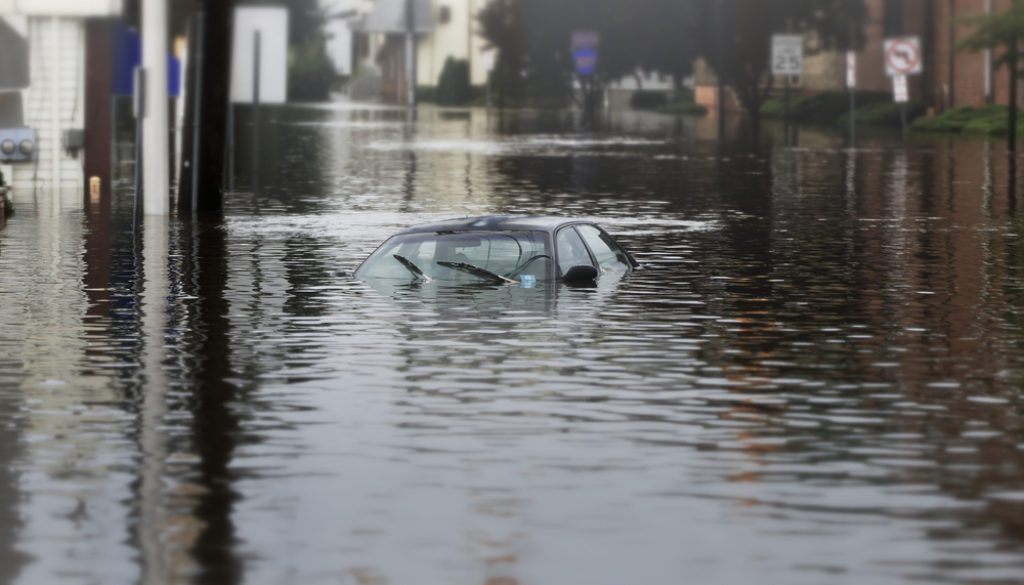September Safety Training: Natural Disasters
Updated 5/17/24
The exact nature varies depending on location, but natural disasters occur all over the country. Snowstorms, hurricanes, wildfires, floods and other large-scale events often cause serious property damage and physical injuries. Healthcare institutions, government departments, schools and other organizations must prepare for these events to mitigate the threats to their people and operations. By incorporating natural disaster preparation into annual safety training, organizations can help protect their workers and limit financial loss.
Natural disasters are extremely costly
Weather- and climate-related disasters can cause serious destruction, injuries and loss of life. The National Oceanic and Atmospheric Administration (NOAA) tracks natural disasters that occur in the U.S. NOAA recognizes seven types of weather and climate disasters: winter storms, freezes, wildfires, droughts, floods, severe storms and tropical cyclones.
In 2023, the United States experienced 28 weather events and climate disasters, each of which cost over $1 billion in damages and repairs. Together, they caused 492 deaths and cost $92.9 billion. These events, including nineteen severe storms, two tropical cyclones, four flooding events, and one drought and several tornados. Over the last decade (2014-2023), 173 separate billion dollar weather events have costed at least 1.2 trillion dollars in damages.
Essential safety training topics
Natural disaster training should include sections on preparedness, response and recovery.
- Threat identification: Safety administrators should identify which natural disasters threaten the local area as well as those in other locations that could affect operations (e.g., a hurricane that disrupts transportation and supply chains). It’s vital to understand the likely effects of each particular disaster (e.g., dangerous roads in a snowstorm or power outages caused by flooding).
- Emergency preparedness: Safety training should give individuals the knowledge and tools to keep themselves safe in a natural disaster. Steps may include building a supply of food and water, gathering first aid supplies and developing remote work policies to use when conditions prevent traveling to the office.
- Evacuation and response plans: Incident managers should create evacuation and shelter-in-place instructions and provide them to every individual.
- Emergency communication: Clarify who is responsible for sending emergency alerts and maintaining communication with employees or students during an event.
- Recovery plans: Develop a step-by-step plan and timeline to return to normal operations. This may include incorporating remote work or distance learning for a while, especially if property damage must be addressed.
Organizations often have to coordinate natural disaster recovery efforts with local and federal government entities (e.g., the Federal Emergency Management Agency). It may be useful to designate an individual to serve as a liaison during disaster recovery.
Prepare effectively for natural disasters
Hurricanes, floods, droughts and wildfires are just a few examples of catastrophic natural events that can cause severe property damage and loss of life. It’s vital for schools, businesses and other organizations to identify the natural disasters that can occur in their area and make plans to respond to and recover from them. Organizations must figure out how to maintain communication with their people throughout a disaster event. It’s also imperative to develop realistic steps and timelines for returning to normal operations.
Rave Mobile Safety provides several critical communications tools that can support ongoing connections during a natural disaster. Educational institutions and organizations can utilize our mass notification system to alert students and employees of emergencies. Rave Alert can send automatic weather updates from the National Weather Service. Administrators can use both long-form notifications (e.g., email) and short-form messages (e.g., SMS text) to ensure recipients receive critical information quickly, even if they are away from their computers.
We also offer mobile-based alert tools that allow users to report an emergency and immediately connect with 9-1-1 and designated internal authorities. Our incident collaboration tools simplify multi-agency response operations by connecting crisis managers with government officials, 9-1-1 and first responders. Rave Mobile Safety’s communication tools are FirstNET, FedRAMP and SAFETY Act certified and designed to provide reliable communications during any emergency. Contact our team to get more information on our prepackaged solutions or learn about designing a customized system.





